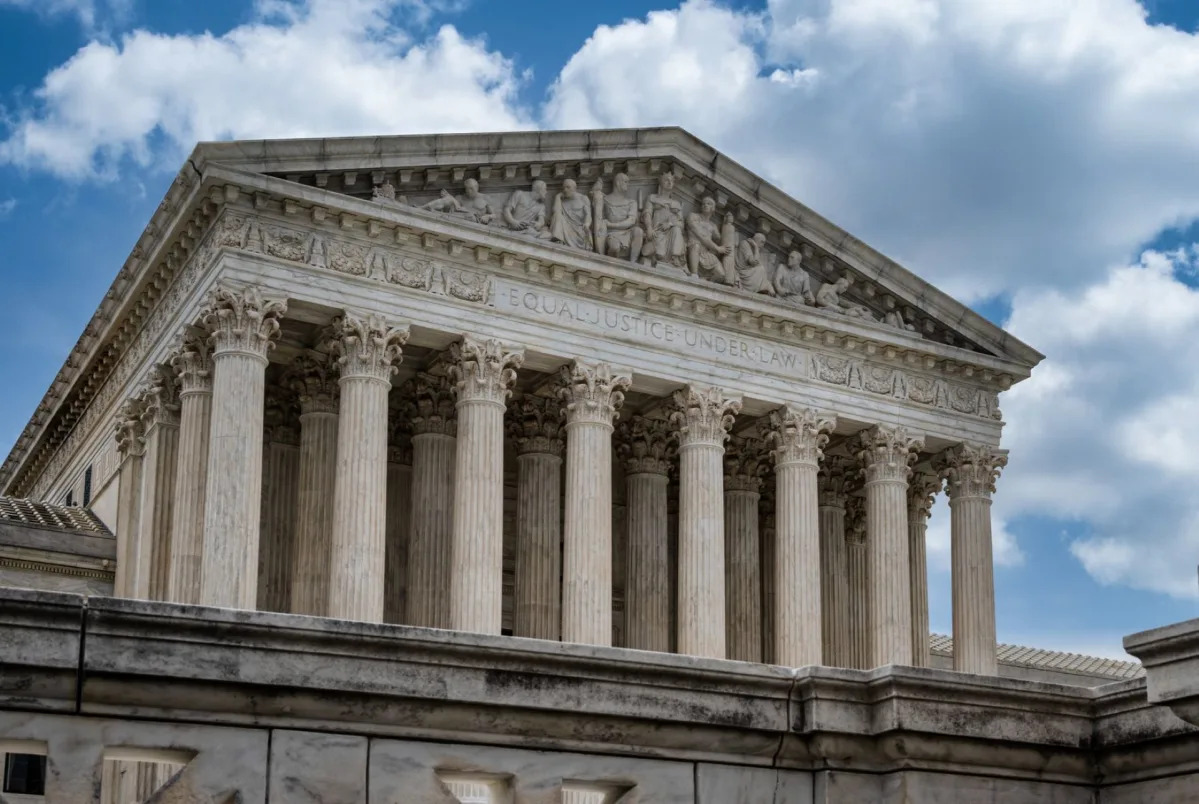Back in December 2022 in the case of Antonyuk v. Hochul the state didn’t like the District Court enjoining the New York State CCIA. New York’s Bruen spam response law.
Appellants request a stay pending appeal of the district court’s order dated November 7, 2022 (N.D.N.Y. 22-cv-986, doc. 78), enjoining Appellants from enforcing certain aspects of New York’s Concealed Carry Improvement Act (“CCIA”). Having weighed the applicable factors,
see In re World Trade Ctr. Disaster Site Litig., 503 F.3d 167, 170 (2d Cir. 2007), we conclude that a stay pending appeal is warranted. Accordingly, upon due consideration, it is hereby ORDERED that the motion for a stay pending appeal is GRANTED and the district court’s November 7 order is STAYED pending the resolution of this appeal. To the extent that the district court’s order bars enforcement of the CCIA’s provisions related to persons who have been tasked with the duty to keep the peace at places of worship, airports, and private buses, such categories are EXCEPTED
from this order. Appellees’ motion to expedite the resolution of the matter is GRANTED.
—
Oliver Milman, US supreme court shrinks clean water protections in ruling siding with Idaho couple, The Guardian (May 2023)This is the entirety of the order granting the stay. This was in response to 180+ pages that the District Court wrote explaining why the CCIA was a crap law and that the state was likely to lose on the merits.
The entire explanation exists somewhere on page 170 of a 2007 2nd Cir. Opinion.
Digging down the rabbit hole, we find:
The four factors to be considered in issuing a stay pending appeal are well known: “(1) whether the stay applicant has made a strong showing that he is likely to succeed on the merits;[1] (2) whether the applicant will be irreparably injured absent a stay; (3) whether issuance of the stay will substantially injure the other parties interested in the proceeding; and (4) where the public interest lies.”
Hilton v. Braunskill, 481 U.S. 770, 776, 107 S. Ct. 2113, 95 L. Ed. 2d 724 (1987);
see Cooper v. Town of East Hampton, 83 F.3d 31, 36 (2d Cir.1996). We have applied these same factors in considering whether to vacate a stay.
See Mohammed v. Reno, 309 F.3d 95, 100 (2d Cir.2002). We have also noted that the degree to which a factor must be present varies with the strength of the other factors, meaning that “`more of one [factor] excuses less of the other.'”
Thapa v. Gonzales, 460 F.3d 323, 334 (2d Cir.2006) (quoting Mohammed, 309 F.3d at 101).
Having heard the interlocutory appeal after full briefing, we are in a position to evaluate the Appellants’ probability of success in a more focused way than could the motions panel. Although we are not prepared at this time to resolve all of the many issues arising on the merits of the appeal, we can conclude that there is now a lesser probability than might have previously appeared that the Appellants will succeed in preventing at least some of the Plaintiffs’ claims to proceed into at least the discovery stage of the litigation.
The second factor irreparable injury to the stay applicants remains the same as before: any proceedings in the District Court pending appeal will irreparably impair, at least to some extent, their alleged claim to immunity from suit. The third factor substantial injury to the parties opposing the stay has increased in significance with the passage of time since among the Plaintiffs are many people with life-threatening injuries, some of whom have died since the litigation began.
This effect of the passage of time upon the Plaintiffs’ interests also has a bearing on the public interest, which is to be considered as the fourth factor, although there are public interest considerations on both sides. On the one hand, there is a public interest in having any of the Plaintiffs who might be entitled to recovery receive compensation while still living and able to use it to cover medical costs and improve the quality of their lives. On the other hand, there is a public interest in vindicating the immunity of any of the Defendants who might be entitled to immunity from suit. At this point, we cannot predict whether any Plaintiffs will ultimately obtain compensation if immunity from suit is not available to the Defendants, nor are we prepared to adjudicate the jurisdictional challenges and immunity claims without a thorough consideration of the substantial issues presented to us. Nevertheless, a decision whether to maintain the stay must be made. On balance, we conclude that the public interest favors permitting pretrial proceedings to resume, *171 thereby hastening the trial that might result in compensation for at least some Plaintiffs during their lifetimes, even though that course will impose upon the Defendants the burdens of pretrial discovery, thereby denying them immunity from suit during the interval from now until such time as it might ultimately be determined that their claims for immunity from suit are valid.
Missing citations for 7MS22MGU
The first paragraph in the quote is the standard reasons for why an injunction is granted because that is the same reason for a stay to be granted stopping an injunction.
we can conclude that there is now a lesser probability than might have previously appeared
Missing citations for 7MS22MGU That wording, applied to the Antonyuk reads like “we know better than the District Court because we said so.”
It also seems to say that the question of irreparable injury fails. While we know that any constitutional right denied is an irreparable injury, the courts have often balanced the Second Amendment injury away. In the Court’s mind, it is better for a gun owner to be denied their rights than to have the state’s legislation enjoined.
Finally, it seems to say that a delay is not really a problem because “PEOPLE WILL DIE IF THIS LAW ISN’T ALLOWED TO STAY IN PLACE!!!”
The point being, that we had to dig into a different opinion and need to guess at what the 2nd Circuit Court’s reasoning is. Because we are guessing, it is much more difficult to say “you are wrong” when taken up by the Supreme Court.
In addition, in the cited case, World Trade Center Disaster Site Litigation, the 2nd Circuit did not actually cite to the Supreme Court. All of their citations, in the quoted work, are back to themselves. Or, as my mother said on more than one occasion, “If I’ve told you once, I’ve told you a thousand times.” That doesn’t mean her reasoning was any better this time than it was in the previous 999 times.
If we needed to know more about the reasoning, we would have to go read those other opinions.
We see the same sort of general waving of hands in Koons v. Platkin. The Court’s entire reasoning is expressed as as we conclude the applicable factors warrant such a stay, see In re Revel AC, Inc., 802 F.3d 558, 568 (3d Cir. 2015)
Missing citations for CDUFQ46W. We have to look at the cited opinion and then guess at what words out of that page were being used to justify this stay.
The Sliding-Scale Approach to Balancing the Stay Factors
Under Federal Rule of Bankruptcy Procedure 8007, a party can move to stay the effect of a bankruptcy court order pending a resolution on appeal. See Fed. R. Bankr.P. 8007. The factors considered “overlap” the familiar ones courts look to in ruling on applications for preliminary injunctions. See Nken v. Holder, 556 U.S. 418, 434, 129 S.Ct. 1749, 173 L.Ed.2d 550 (2009) (observing that “similar concerns arise whenever a court order may allow or disallow anticipated action before the legality of that action has been conclusively determined”). To repeat essentially what was already noted above, the following factors come into play:
- whether the stay applicant has made a strong showing that [it] is likely to succeed on the merits;
- whether the applicant will be irreparably injured absent a stay;
- whether issuance of the stay will substantially injure the other parties interested in the proceeding; and
- where the public interest lies.
Missing citations for IGVYV9A3
We see the same language as the 2nd Circuit Court used, that’s because it is common across all jurisdictions. Guessing makes me think that where the public interest lies
might hold more weight with the Court.
Hilton v. Braunskill, 481 U.S. 770, 776, 107 S.Ct. 2113, 95 L.Ed.2d 724 (1987). In order not to ignore the many gray shadings stay requests present, courts “balance[e] them all” and “consider the relative strength of the four factors.” Brady v. Nat’l Football League, 640 F.3d 785, 789 (8th Cir.2011) (quoting Fargo Women’s Health Org. v. Schafer, 18 F.3d 526, 538 (8th Cir.1994) (internal quotation marks omitted)); see also 16A Charles Alan Wright et al., Federal Practice and Procedure § 3954 (4th ed. 2008) (“The four factors should be balanced; thus, for example, if the balance of harms tips heavily enough in the stay applicant’s favor then the showing of likelihood of success need not be as strong, and vice versa.” (footnotes omitted)).
Missing citations for IGVYV9A3
Here, the 3rd Circuit brings up “balance” multiple times. This almost always results in the court balancing rights away.
“[T]he most critical” factors, according to the Supreme Court, Nken, 556 U.S. at 434, 129 S.Ct. 1749, are the first two: whether the stay movant has demonstrated (1) a strong showing of the likelihood of success and (2) that it will suffer irreparable harm — the latter referring to “harm that cannot be prevented or fully rectified” by a successful appeal, Roland Mach. Co. v. Dresser Indus., 749 F.2d 380, 386 (7th Cir.1984) (Posner, J.). Though both are necessary, the former is arguably the more important piece of the stay analysis. As Judge Posner has remarked, it isn’t enough that the failure to obtain a stay will be “a disaster” for the stay movant but only a “minor inconvenience to the defendant,” as “[e]quity jurisdiction exists only to remedy legal wrongs; [thus,] without some showing of a probable right[,] there is no basis for invoking it.” Id. at 387.
Missing citations for IGVYV9A3
As I dig through this litigation, I find that concerns that we have about Second Amendment Rights are echoed by other groups, and we see the same sorts of things happening. I don’t know anything about the case cited here. What I find interesting is that the Court pulled a small amount of text from a Supreme Court Opinion, Nken but then turned to the 7th Circuit Court to find an interpretation of those words that this Court approves of.
It appears that the Court is saying that winning on the merits is more important than the harm being caused to either party. That sounds good…
And finally, For our Court, a sufficient degree of success for a strong showing exists if there is “a reasonable chance, or probability, of winning.” Thus, while it “is not enough that the chance of success on the merits be `better than negligible,'”, the likelihood of winning on appeal need not be “more likely than not,”
Missing citations for IGVYV9A3 internal citations omitted.
The Third Circuit Court doesn’t think there is a high enough probability of the plaintiffs winning to allow the injunction to remain in place. They believe that the sensitive places language of Chapter 131 will be found constitutional.
Like this:
Like Loading...




